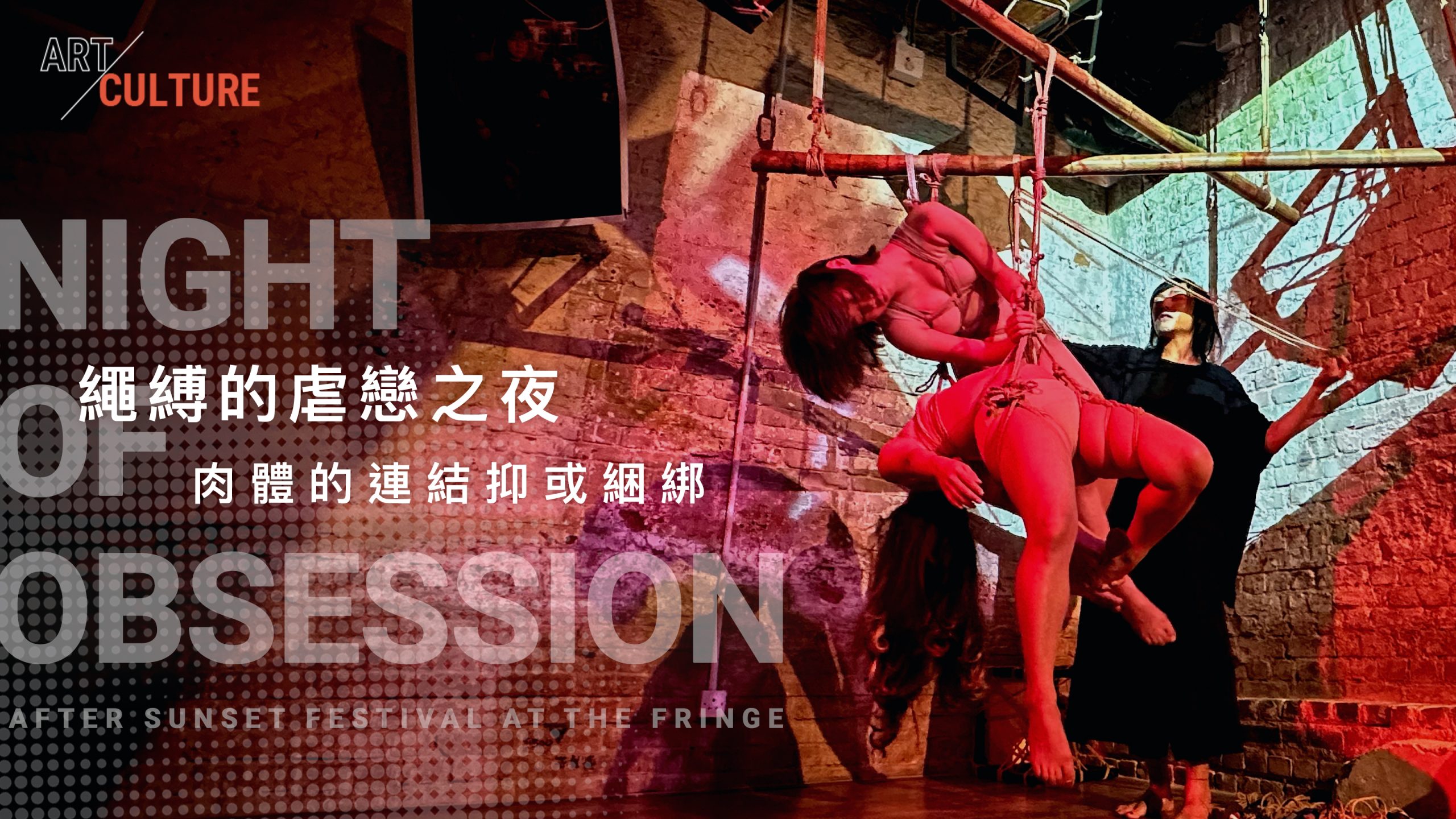https://youtube.com/shorts/vrwiBZiuc4I?si=61gYvRr3FDq3yiVX

On the evening of the 17th, The Fringe Club’s After Sunset Festival featured “Night of Obsession”, an exhibition that explored the intricate blend of pleasure and pain. This concept, central to artistic creation, requires a certain fascination with pain to express one’s aesthetic. Our attendance was prompted by an invitation from Siu Ding, the event’s photographer, to witness her project titled “Ritsu Aomame”, centering on the art of shibari, or rope bondage.
Shibari, rooted in erotic culture, is an art that probes the interplay of body, emotion, desire, and connection, encompassing aesthetics, skill, and sensuality.
Shi Shi, a master of traditional Japanese rope bondage, describes pain as a profound and authentic sensation, linking the physical with the emotional. In his performance, Shi Shi employed ropes to bind the models’ bodies and emotions together. This act, focused more on the perception of another’s body and the rope’s spatial presence, eschewed typical erotic elements in favour of a pure aesthetic interaction with the audience.

The night’s models, Ritsu and Caylyn, clad in skin-toned lingerie, presented an almost bare performance. Alternately, Shi Shi wrapped them in hemp rope, starting at the chest and encircling down to the waist, securing the knots tightly. The models, initially relaxed, became visibly constricted by the ropes, their physical form accentuated in the art of bondage. Shi Shi allowed their limbs freedom to move around the venue. As they passed, spectators, myself included, respectfully stepped back, closely observing the detailed knots and the hemp’s coarse texture.

One could discern the underlying principle of power balance in shibari: the bound must fully trust the rope master for control. Yet, the models weren’t mere passive subjects. Shi Shi meticulously adjusted the ropes in response to their breathing and subtle movements, creating a dynamic of mutual respect rather than dominance. He skillfully suspended the models using ropes and pulleys, allowing them moments of connection mid-air, as if entering an intimate world exclusive to them.

The hour-long performance, devoid of dialogue or narration, demanded attentive visual engagement. Projected alongside was a tribute to “Oi Kwan Barbers”, a symbol of enduring Cantonese heritage, by Xiao Ding. This visual narrative, interwoven with another photographic installation at a separate gallery, used ropes to mimic hair, filling the barbershop with dense, suspended forms. The rope, a tangible mediator, transformed the space from intangible to oppressively present, demonstrating its strength and versatility.
After the performance, Shi Shi gently released the models, their newly regained freedom juxtaposed with lingering marks of the ropes, a testament to the evening’s intensity. Ritsu and Caylyn shared their perspectives on the art of bondage, embodying the dual roles of artist and artwork. Art, in its essence, is the pursuit of extremes.

After Sunset offers a chance to cast off our superfluous layers,
Shibari artist Shi Shi
to find liberation and return to our authentic selves
The After Sunset Festival, in collaboration with The Fringe Club, celebrated the “Oi Kwan Barbers” and other remnants of the city’s vanishing trades. Uniting twenty-three Hong Kong artists, it sought to illuminate the twilight of these traditional practices, offering art as a medium to extend their ephemeral glow.
Photo source: Hong Kong Tourism Board、aftersunfestival@IG

